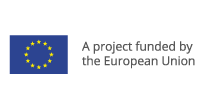National Climate Change Policy
|
Milestones in Morocco’s Climate Policy |
Date |
|
Ratification of the Framework Convention on Climate Change |
28 December 1995 |
|
Submission of the initial National Communication |
01 November 2001 |
|
Ratification of the Kyoto Protocol |
25 January 2002 |
|
Establishment of the CDM –DNA |
18 September 2002 |
|
Issuance of a National Plan against Global Warming (PNRC) |
November 2009 |
|
Submission of the Second National Communication |
03 November 2010 |
|
Submission of Nationally Determined Contribution (NDC) |
19 September 2016 |
|
Paris Agreement (Entry into force) |
04 November 2016 |
Morocco has developed a National Plan against Global Warming ( PNRC ) that was presented at the COP 15 held in Copenhagen in 2009. The Plan provides for reducing greenhouse gas emissions through the development and diversification of clean energy sources and the implementation of adaptation measures that rely mainly on the water strategy and Green Morocco Plan for Agriculture, also launched in 2009.
The Plan includes mitigation, adaptation and cross-sectoral measures and is based on two strategic pillars: mitigation of greenhouse gases emissions via the implementation of a low Carbon development policy, in particular through the very ambitious "solar project of 2000 MW in the Moroccan desert"; and the evaluation of the vulnerability and adaptation to climate change impacts. With the National Plan against global warming, Morocco has set up a permanent process for managing these policies which enables making significant progress and ensuring effective monitoring and governance.
The Low Carbon Development context
Moroccan mitigation policy focuses mainly on measures of energy efficiency and renewable energy production which stemmed from the Energy Strategy launched in 2008. This is an ambitious and voluntarist Energy Strategy aimed at reaching the 42% of renewable energy by 2020, equally distributed among solar power, wind power and hydro-power (2GW each), as well as an energy efficiency program aiming at reaching the 12% of energy saving by 2020. To achieve these objectives, an attractive legal and institutional framework was set-up and integrated national plans have been rolled-out for both solar and wind power
Key data
Morocco remains a low emitter of greenhouse gases, indeed they represent only 0.14% of global emissions (2000).
- Total GHG emissions: 50.16 Mt CO2, IEA 2011
- 154.6 Mt CO2 in 1999, 1.74 t CO2 / capita
- 63.4 Mt CO2 in 2000, 2.1 t CO2 / capita
- 75.0 Mt CO2 in 2004, 2.5 t CO2 / capita
- Per capita GHG emissions : 1.55 t CO2 / capita, IEA 2011
- Carbon intensity of the economy : 0.64 Kg CO2/ 2005 USD, IEA 2011
- Carbon intensity of the energy sector : 2.9 t CO2 / toe, IEA 2011
- Share of renewable energy :5.08%
Adaptation/resilience
A brief assessment of vulnerability to climate change, conducted as part of the Second National Communication, highlights that Morocco's natural resources are exposed to increased climate variability and a growing human pressure. Future Climate Change is likely to exacerbate this vulnerability with significant impacts on ecosystems and socio-economic activities. A wide range of adaptation tools have been incorporated in Morocco’ sectoral adaptation strategies, such as in the Water Sector, Agriculture, Forestry, biodiversity and combating desertification, Housing, Fisheries and coastal management, Health and Tourism.
Key resources



